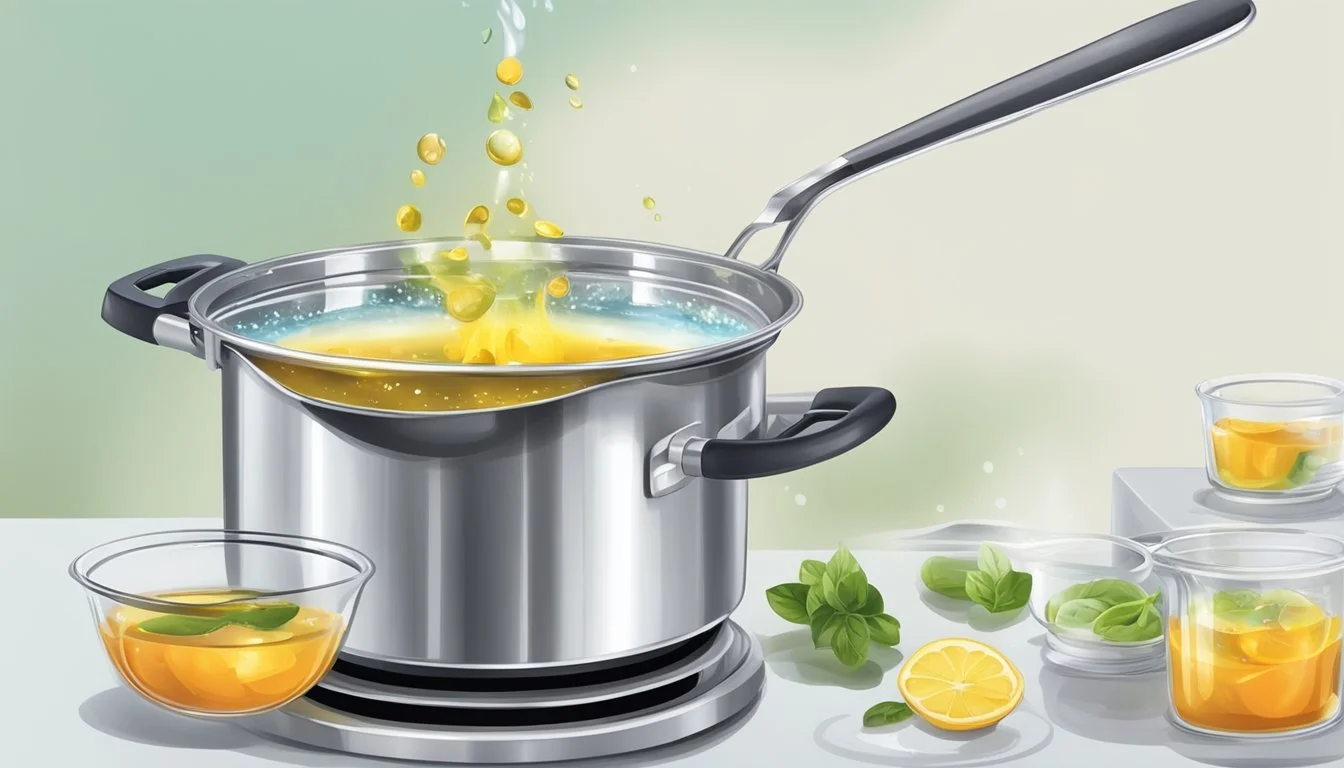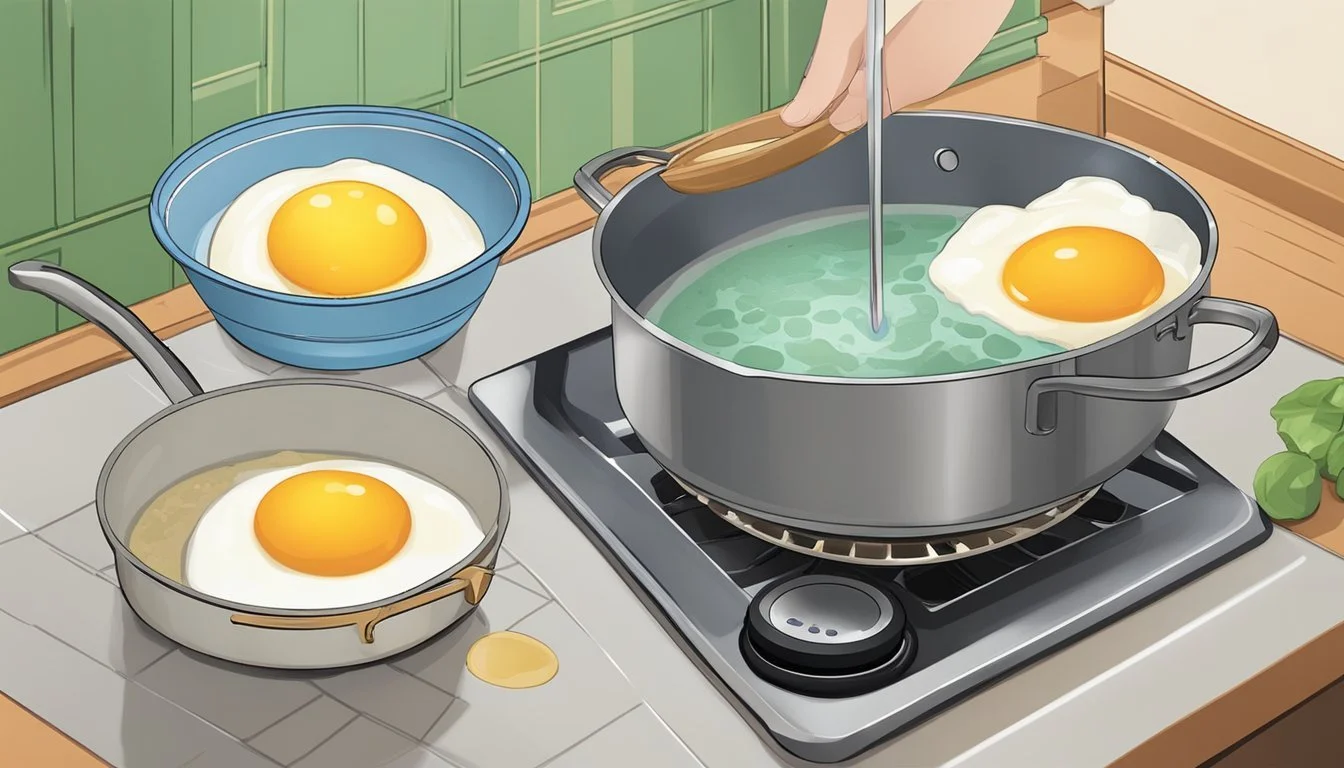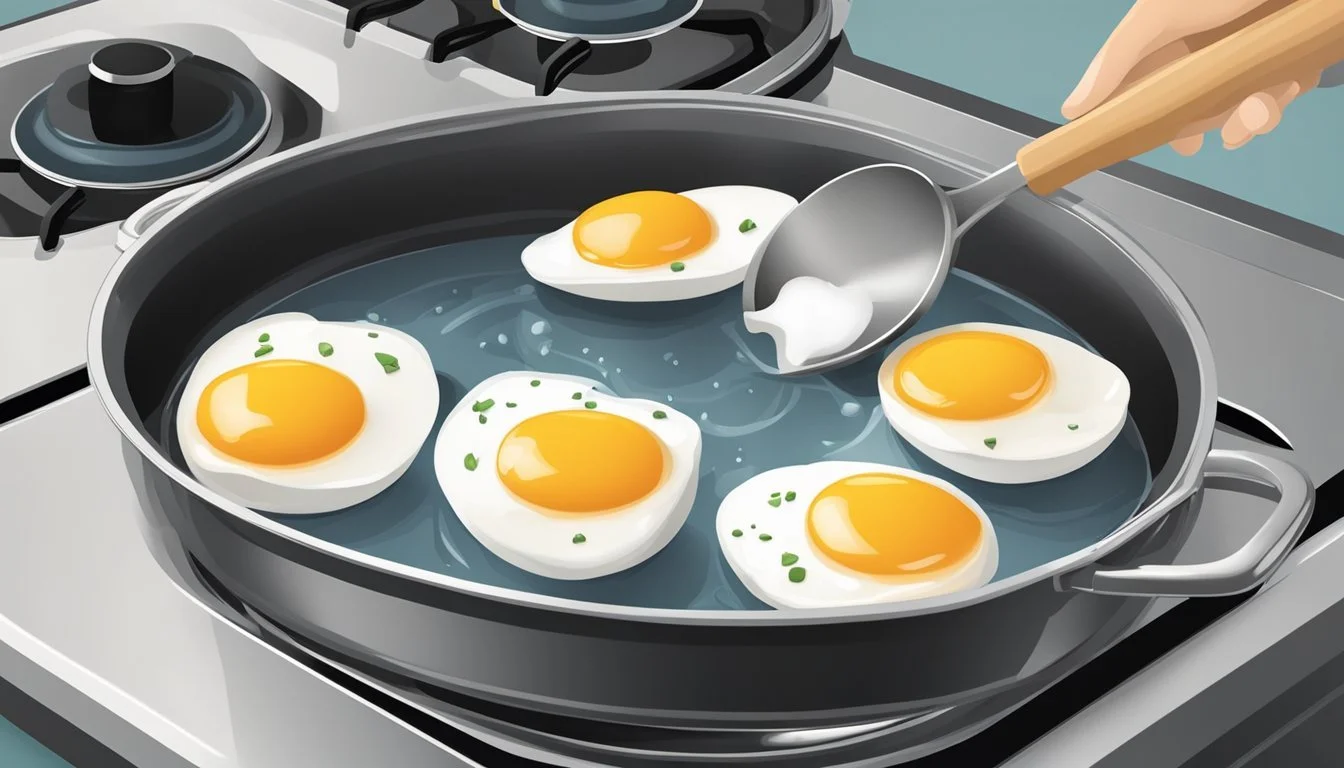How Long Do Freshly Prepared Poached Eggs Last?
Shelf Life and Storage Tips
Poached eggs are a beloved breakfast classic known for their delicate textures and versatility in pairing with a range of dishes. When prepared fresh, they offer a delightful runny yolk encased in a tender white, ideal for dishes like eggs Benedict or simply served over toast. The technique for making poached eggs involves gently cooking the egg in simmering water until the white is set and the yolk remains soft, resulting in a unique egg experience that's savored by many.
However, the shelf life of poached eggs is a common concern for those looking to prepare them in advance. Unlike their harder-cooked counterparts, poached eggs are more delicate, both in structure and in terms of how long they maintain their quality. When stored properly, poached eggs can keep their intended flavor and texture for a short period, which can be significantly extended with the right storage techniques.
Understanding the factors that influence the longevity of poached eggs is crucial for both food safety and culinary quality. These factors include the initial freshness of the eggs, the precise cooking method, and the subsequent cooling and storage conditions. They play a pivotal role in determining just how long poached eggs can last while still being enjoyable to eat.
Essential Equipment for Poaching Eggs
To poach eggs properly, one needs a few key utensils: the right size pot, a slotted spoon, and a mesh strainer. These essentials are the foundation of success for this delicate cooking technique.
Choosing the Right Pot
A pot is central to poaching eggs—its size and depth are crucial. One should opt for a pot that is at least 4 inches deep, with enough width to avoid crowding the eggs. This allows the water to circulate and cook the eggs evenly. A large, deep saucepan or a wide-rimmed pot are both excellent choices to achieve perfectly poached eggs.
The Role of a Slotted Spoon
A slotted spoon is indispensable for gently lowering the eggs into the simmering water and retrieving them with minimal disturbance. The slots allow water to drain away as the egg is lifted from the pot, reducing the chances of yolk breakage or waterlogged whites. A slotted spoon with a long, heat-proof handle is preferred to keep one's hands at a safe distance from the steam.
The Importance of a Mesh Strainer
A mesh strainer is often overlooked, yet it is key in removing the thinner, watery portion of the egg white, which helps in achieving a tidier poached egg. Fine mesh strainers are the ideal type, as they allow just the right amount of the egg white to strain through without losing the yolk. This step ensures a more aesthetically pleasing and compact poached egg.
Ingredients for the Perfect Poach
The key to a perfect poached egg lies in the freshness of the eggs and the precise combination of water temperature, vinegar, and salt.
Fresh Eggs: Foundation for Success
Fresh eggs are essential for poaching, as they have firmer whites that hold together better in water. They should be as fresh as possible to ensure that the egg whites coalesce around the yolk, leading to a neater poached egg with a tender consistency.
Egg Freshness: Best if used within 4-5 days of purchase
Appearance: Clearer egg whites with a more centered, vibrant yolk
Water Temperature and Vinear
The water temperature for poaching eggs should be just below boiling, at a gentle simmer where small bubbles rise to the surface — typically around 180-190°F (82-88°C). Vinegar is often added to the water to help the egg whites firm up more quickly.
Water Temperature: Gentle simmer (180-190°F / 82-88°C)
Vinegar Addition: 1-2 teaspoons per quart of water
Salt: Enhancing Flavor
Salt is not just a flavor enhancer but can also contribute to the integrity of the poached egg. A teaspoon of kosher salt added to the poaching water can help season the egg from the outside.
Salt Type: Kosher or sea salt preferred
Quantity: About 1 teaspoon per quart of water
Poaching Technique
To achieve perfect poached eggs, precision in technique is crucial. This section will guide you through creating a gentle whirlpool, determining egg doneness, and using an ice bath to halt cooking.
Creating a Whirlpool
A crucial step in poaching eggs is to create a whirlpool in simmering water. By stirring the water to form a vortex before adding the egg, it helps the egg whites wrap around the yolk, resulting in a neatly shaped poached egg. Use a spoon or spatula to stir the water in a circular motion.
Timing for Doneness
The cook time for poached eggs directly affects their doneness. For a runny yolk, a cooking time of approximately 3 to 4 minutes is optimal. If a firmer yolk is desired, one can extend the cooking time to 5 minutes. Use a timer to ensure consistency.
Transferring Eggs to Cold Water
Once the eggs are poached to the desired level of doneness, they should be transferred to an ice bath to stop the cooking process immediately. The cold water halts the egg proteins from cooking further and also makes the eggs easier to handle.
Serving and Presentation
When serving fresh poached eggs, the balance of textures, flavors, and visual appeal is paramount. This section explores how to present poached eggs with complementary accompaniments, how to plate on traditional bases like toast and English muffins, and suggests ways to garnish and season to enhance the overall dining experience.
Accompaniments for Poached Eggs
Poached eggs are versatile and can be accompanied by a range of items. For a classic touch, Hollandaise sauce offers creamy richness, often paired with Eggs Benedict atop a crispy English muffin. A healthier option could include slices of avocado or a bed of sautéed spinach, ideally complementing the soft texture of the egg.
Classic: Hollandaise sauce, Canadian bacon, English muffin
Hearty: Sauteed greens, ham, grilled tomatoes
Light: Avocado, smoked salmon, fresh herbs
Plating on Toast or English Muffins
The base for plating poached eggs influences the meal's texture and flavor. A lightly toasted English muffin gives a sturdy foundation that absorbs the egg's runny yolk without becoming soggy. Alternatively, a piece of toast can add a crunchier texture and when using whole-grain versions, offers additional nutrition.
English Muffin: Crispy on the edges, soft in the center, perfect for Eggs Benedict.
Toast: Choose sourdough or whole-grain for a crunchy texture and enhanced taste.
Garnishing and Seasoning
Final touches such as garnishing and seasoning elevate the appeal of poached eggs. A sprinkle of fresh, finely chopped herbs like chives (how long do chives last?) or parsley can introduce a color contrast and fresh flavor. For seasoning, a dash of salt, black pepper, or even paprika not only adds to the taste but also makes the dish visually attractive.
Herbs: Chives, parsley, dill
Seasoning: Salt, freshly ground black pepper, paprika
Storage and Shelf Life
When it comes to preserving the freshness of poached eggs, proper storage techniques are crucial. They can be kept in the fridge or freezer, and there are best practices to extend their shelf life and maintain quality.
Refrigerating Poached Eggs
Freshly poached eggs should be stored in cold water to maintain moisture and then placed in the refrigerator. This method helps to keep them fresh for up to two days. For optimal storage, one should transfer the poached eggs to an airtight container or cover them with plastic wrap before refrigerating.
Freezing Poached Eggs
For those who wish to keep poached eggs longer, freezing is an option. The eggs can be placed in an airtight container or freezer bag to prevent freezer burn and odor absorption. Although poached eggs can be safe to consume from the freezer for a long time, for best flavor and texture, they should be used within one year.
Best Practices for Storage
To ensure the quality and safety of poached eggs, the following storage practices should be observed:
Use containers that seal tightly to protect the eggs from absorbing fridge odors or flavors.
Label containers with the date of storage to track their freshness.
To reheat, place the leftover poached eggs in warm water for a few minutes until heated through. Avoid using high heat or microwaving as this can deteriorate the texture.
Reheating Poached Eggs
When poached eggs are stored correctly, they can be reheated efficiently to preserve their delicate texture and runny yolks. The key to successful reheating is managing temperature and timing.
Methods for Reheating
To reheat poached eggs, one must be gentle to avoid overcooking the yolk. Below are the recommended steps:
Simmering Water: A pot of water should be brought to a near boil, then lowered to a simmer. The eggs are then gently placed into the water using a slotted spoon and heated for 30-45 seconds. This method ensures that the yolk remains runny.
Maintaining Texture and Flavor
For poached eggs to retain their texture and flavor when reheated:
Temperature: It's crucial to avoid boiling water as it can overcook the eggs and turn them rubbery.
Timing: Keeping the cooking time under a minute will help maintain a runny yolk and prevent the whites from becoming too firm.
Reheating poached eggs involves careful heat management and time control to ensure the yolk stays runny while bringing the eggs back to the desired temperature.
Recipes and Variations
While poached eggs are perishable and should be consumed within 2 hours when served hot, or stored in the refrigerator for up to 2 days if immediately cooled, incorporating them into various recipes can enhance their flavor profile. Below are some specific ways to enjoy poached eggs, from a classic recipe to a salad enhancement and creative breakfast options.
Classic Eggs Benedict
Eggs Benedict is a luxurious breakfast recipe that pairs poached eggs with Canadian bacon, English muffins, and Hollandaise sauce. To prepare, one toasts the English muffins, tops them with bacon or ham, and gently places a poached egg on each half. The dish is finished with a drizzle of rich, buttery Hollandaise sauce, often made with lemon juice, egg yolks, and a hint of cayenne.
Poached Eggs in Salads
Adding poached eggs to salads can elevate a simple dish to a substantial and healthy breakfast or brunch option. A frisée salad with lardons and a vinaigrette dressing is classic, but they can be added to a variety of greens and dressings. The runny yolk of a poached egg adds creaminess and richness, complementing the fresh crunch and acidity of the salad.
Creative Breakfast Ideas
For those looking for unique breakfast recipe options, poached eggs can be the centerpiece of many healthy breakfast dishes. They can be served over sautéed greens, such as spinach or kale, along with whole-grain toast for a balanced meal. Alternatively, placing a poached egg on top of a savory oatmeal or quinoa bowl can provide a protein boost to start the day.
Tips and Troubleshooting
Successful poaching of eggs relies on mastering the technique and understanding how to troubleshoot common problems. This section provides focused advice to ensure that each poached egg has a firm white and retains its simple, delicate nature, whether cooking one or multiple eggs at a time.
Managing Multiple Eggs
When preparing multiple eggs, consistency is key. To maintain uniformity in cooking:
Use a large pot: Ensure ample space for each egg to cook without touching.
Timing: Create a staggered cooking start time for each egg to keep track for easy removal according to your firmness preference.
Avoiding Over-poaching
Over-poaching can lead to a rubbery texture. To avoid this:
Set a timer for an accurate cook time: 3-4 minutes for a runny yolk, 5-6 minutes for a firmer yolk.
Temperature control: Maintain a gentle simmer, since a rolling boil can cause the whites to become tough and overcooked.
Using Old Eggs
The freshness of eggs affects poaching quality:
Fresh is best: Fresh eggs have firmer whites which hold together better.
Straining method: For older eggs, using a strainer to remove thinner whites can help maintain shape and prevent wispy whites.
Health and Nutritional Information
When considering the inclusion of poached eggs in a diet, it is important to understand their nutritional profile and benefits. This section will touch upon the calorie content of poached eggs, as well as the advantages of having eggs as a part of a healthy breakfast, such as in dishes like eggs Florentine.
Calorie Count of Poached Eggs
A single large poached egg contains approximately 70 calories. The calorie count makes it a suitable option for those monitoring their caloric intake. Poached eggs retain most of the nutrients of a raw egg since they are cooked without oil or butter, avoiding additional calories that come from fats.
Benefits of Including Eggs in Breakfast
Protein-Rich Start: Eggs are a rich source of high-quality protein, with about 6 grams of protein per egg. Starting the day with a high-protein breakfast like eggs Florentine can help maintain muscle mass and support metabolic health.
Vitamins and Minerals: Eggs are packed with essential vitamins and minerals, including vitamin B12, vitamin D, selenium, and choline, important for various bodily functions, including brain health.
Satiety and Weight Management: The protein in eggs can contribute to a feeling of fullness, which may help with weight management by reducing the urge to snack between meals.
Versatility in Healthy Diets: Whether consumed as part of eggs Florentine or in a simple poached form, eggs can be easily incorporated into various healthy breakfast options, catering to diverse dietary needs and preferences.
Advanced Poaching Techniques
When it comes to poaching eggs, consistency and preparation can make all the difference. Utilizing advanced techniques like the Fine Mesh Sieve Method can ensure a cleaner white and using a make-ahead approach can be quite useful for serving poached eggs to large groups or for meal planning.
Fine Mesh Sieve Method
The Fine Mesh Sieve Method is a foolproof approach to achieving the perfect poached egg. One begins by cracking an egg into a fine mesh sieve over a bowl, allowing the more liquid egg whites to drain away, and is left with the firmer white and the yolk. The egg is then carefully transferred to a ramekin. This preparation leads to a tidier poached egg, as the remaining firmer white coagulates more readily when cooked, resulting in a well-formed poached egg.
Making Poached Eggs Ahead of Time
To make poached eggs ahead of time, one must initially poach the eggs as usual, but slightly undercook them, aiming for a runny yolk. After removing the eggs from the water, they are placed into an ice-water bath to halt the cooking process. When ready to serve, the eggs are rewarmed in hot water for no more than 30 seconds. This method enables one to prepare poached eggs in advance and reheat them without losing the delicacy of its texture.
Serving Ideas Beyond Breakfast
Poached eggs, with their delicate texture and versatility, aren't confined to breakfast menus. They can transform a variety of dishes, offering a protein boost and a touch of elegance to meals any time of day.
Adding Poached Eggs to Soups
Incorporating a poached egg into soups is a simple yet impactful way to elevate them. Whether it's a clear broth or a hearty stew, a poached egg adds richness and depth. Ramekins can be used to hold individual servings, making it easy to slide a poached egg atop a steaming bowl just before serving. The warmth of the soup gently finishes cooking the egg, offering a creamy yolk that thickens the liquid when broken.
The French Salad Lyonnaise With Poached Eggs
A classic French Salad Lyonnaise traditionally features frisée lettuce, lardons, and a perfectly poached egg. The poached egg's role is crucial, as when its yolk combines with the warm vinaigrette, it creates a luxurious emulsion that coats the salad. For an authentic brunch experience, serve this salad with crusty bread to mop up the delicious flavors.











